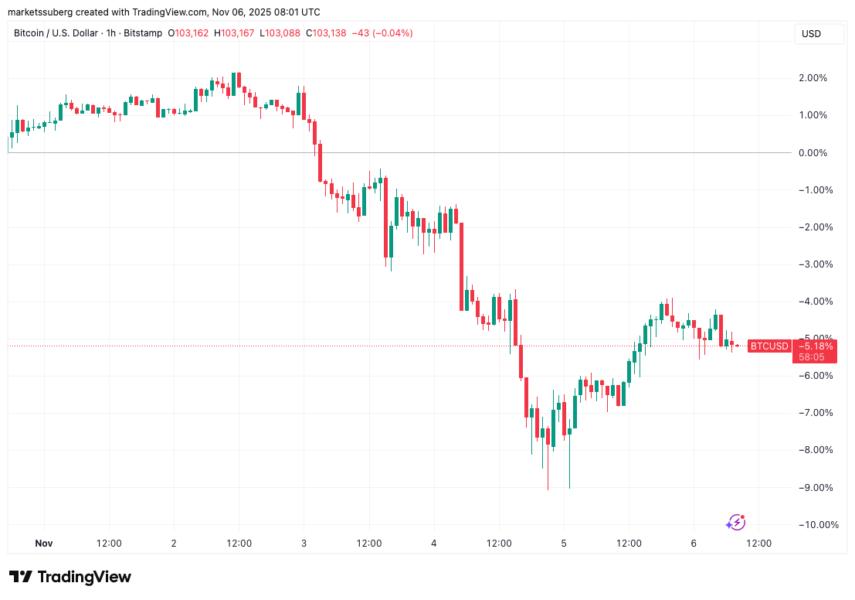Bitcoin has stalled in its upward trajectory as traders encounter a substantial “sell wall” around the US $105,000 mark, complicating the momentum of the world’s leading cryptocurrency. Contributing factors include profit-taking by large holders and renewed uncertainty over tariff policy between the U.S. and China, which is reverberating through risk-asset markets. Spot and derivatives flows are diverging, and the liquidity environment is shifting. The convergence of a strong technical barrier and geopolitical turbulence signals a possible period of consolidation or further retreat rather than immediate breakout.
1. The Technical Barrier at US $105,000
Market data indicate that a large block of sell orders is clustered around the US $105,000 level, creating a formidable supply buffer and dampening upside momentum. In recent trading sessions, price approaches to that level have been met with sharp pull-backs, suggesting that market participants are unwilling or unable to absorb additional upside until this zone is cleared. One analysis reports Bitcoin dipping below the US $105,000 threshold amid mounting pressure.
This “sell wall” implies that a break above will require either a surge in demand or the exhaustion of standing sell orders. Until then, price may remain range-bound or vulnerable to downside shifts.
2. The Tariff Factor and Risk-Asset Correlation
A key macro headwind has re-emerged: trade tensions between the U.S. and China. Recent announcements around tariffs have injected fresh uncertainty, diminishing risk appetite across markets and impacting cryptocurrencies. A tariff shock reportedly triggered a cascade of forced liquidations within crypto and other risk assets.
As Bitcoin increasingly behaves like a risk asset rather than an independent digital store-of-value, these external shocks matter. The interplay between trade policy, equity markets and crypto flows is intensifying. When equities stumble on tariff worries, Bitcoin’s upside tends to be muted as well.
3. Liquidity, Profits and Market Sentiment
Beyond technical and macro layers, fundamental market behaviour is shifting. Profit-taking has gained prominence as traders who rode earlier rallies are systematically trimming exposure near key resistance zones. A noted drop in funding rates and elevated liquidation events accentuate this dynamic.
Meanwhile, liquidity backing for fresh capital inflows appears more fragile. With risk sentiment under pressure, the accumulation of new long positions is not yet proving sufficient to drive a breakout through the supply barrier at US $105,000.
4. What This Means for Investors
For market participants, the current environment merits caution and strategic flexibility:
- Expect consolidation: Unless demand surges or the sell wall breaks, Bitcoin may trade in a muted range near US $100,000 to US $110,000 while clearing supply.
- Watch for triggers: A decisive breakout will likely need supporting catalysts—such as strong institutional inflows, easing of tariff risk, or a sharp shift in risk-asset sentiment.
- Don’t treat this as a breakdown just yet: The support zone around US $100,000 remains intact for now. A pull-back to that level would not necessarily invalidate the bull thesis, but it would require reassessment of conviction levels and timing.
- Broaden your framework: Given the growing linkage between crypto and macro/risk-asset regimes, hedging and diversification matter more than ever.
Conclusion
Bitcoin’s struggle to clear the US $105,000 level underscores the evolving nature of its market environment. Technical resistance, combined with macro-geopolitical headwinds and cautious liquidity flows, suggests that the next leg of price movement is unlikely to be rapid or smooth. While the underlying fundamentals for digital-asset adoption remain unchanged, the shift in market character—from speculative boom to structural maturation—requires patience and nuanced strategy. Investors who recognise the change in regime are better positioned to navigate what lies ahead.
